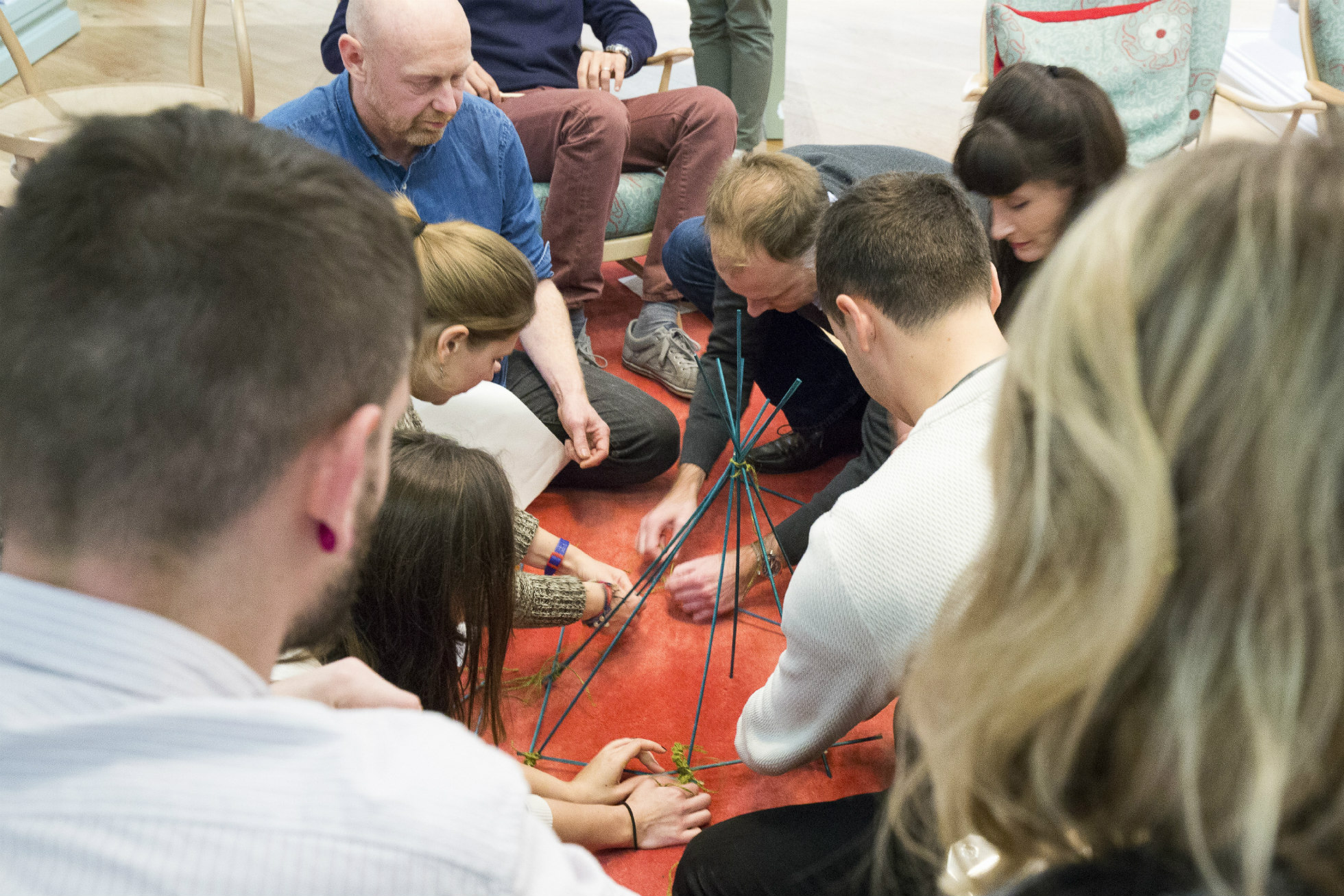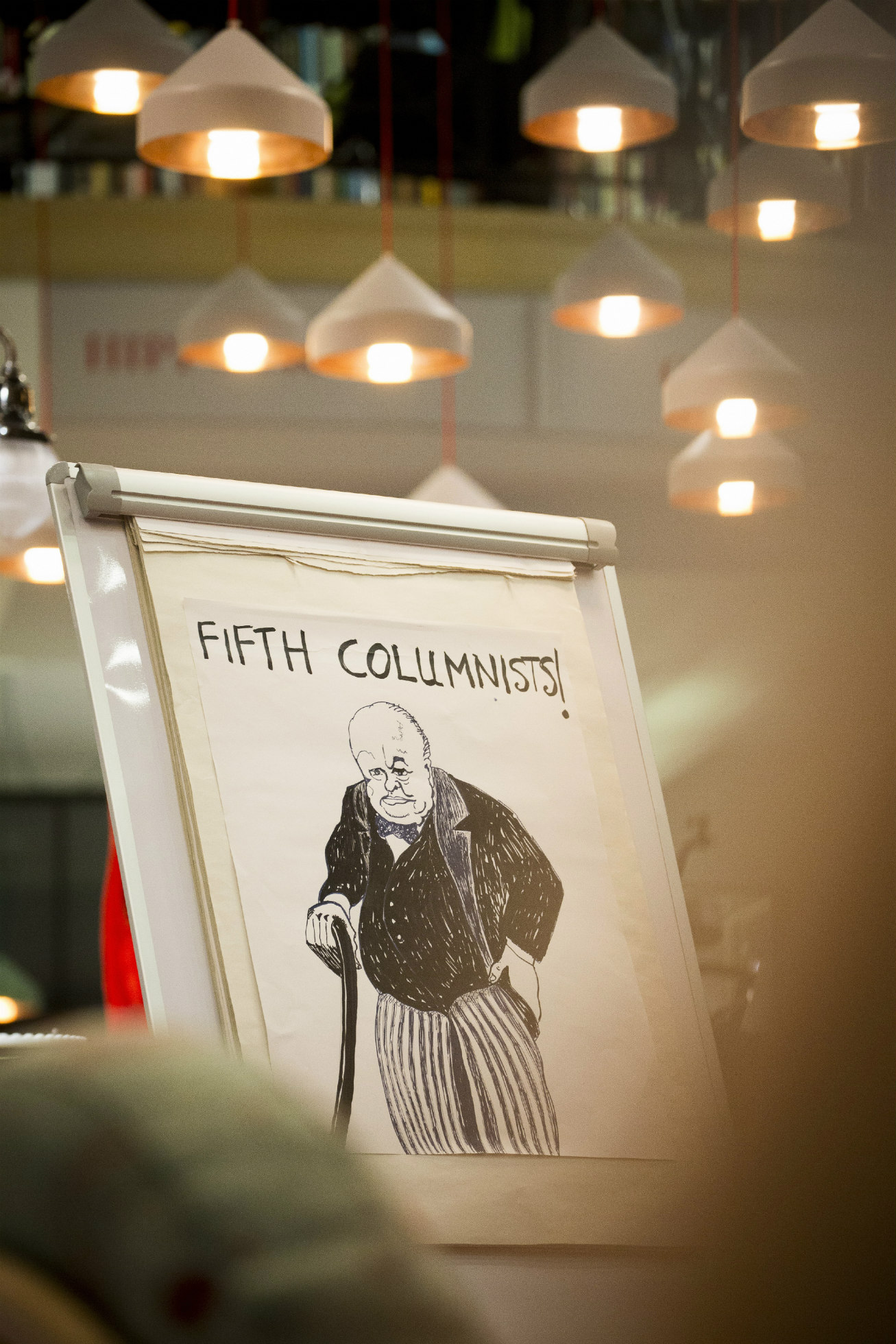By Alice White, Wikimedian in Residence at the Wellcome Library
This blog is the second in a three part series about the experiences of an archivist, a historian and a social researcher in running the War Officer Selection Boards (WOSBs) in the Wellcome Library’s Reading Room last year. Read the archivist’s experience here.
Before my eyes, my research rose up off of the page and came to life. A set of recruits were taking the War Office Selection Board (WOSB) tests that Tavistock Institute psychiatrists had created for the British Army during the Second World War. After spending years researching these officer selection methods, it was fantastic to be able to witness them in practice.
First, recruits were apprised of the situation that had driven the Army psychiatrists to create new tests: a drastic shortage of officers in the early years of the war required new ways of thinking about and finding leaders. Next, they provided some “psychological pointers”, writing down their spontaneous thoughts in response to words and pictures. Subdivided into two smaller groups, they then proceeded to take written intelligence tests and to complete a group task and discussion.
Admittedly, it wasn’t quite a fully authentic recreation. Our recruits were members of the public who had dropped into the Wellcome Library Reading Room and stuck on fake moustaches to get into character before attempting versions of the WOSBs for fun. Whereas the original tests required a stay in a country house and took three days, ours took just one hour. Our written tests were shorter and didn’t include Raven’s Progressive Matrices (a key component of the originals), and our “wamwig” group construction test was on a micro-scale, involving garden dowels rather than large wooden posts.
 Despite such differences, though, taking the tests from pages and pictures to real life was really interesting, and there were some similarities beyond elements of the tests themselves. Like many people (who wrote to their newspapers and MPs) in the 1940s, our groups were unimpressed by the way that the Army sourced many of its officers before the psychological tests had been introduced: by choosing men who had attended the “right” private schools. Historical evidence indicates that the soldiers who took the tests decades ago enjoyed them, and our volunteers did too according to their anonymous feedback forms.
Despite such differences, though, taking the tests from pages and pictures to real life was really interesting, and there were some similarities beyond elements of the tests themselves. Like many people (who wrote to their newspapers and MPs) in the 1940s, our groups were unimpressed by the way that the Army sourced many of its officers before the psychological tests had been introduced: by choosing men who had attended the “right” private schools. Historical evidence indicates that the soldiers who took the tests decades ago enjoyed them, and our volunteers did too according to their anonymous feedback forms.
I loved seeing the tests in action, and hearing participants’ opinions in the discussions that followed, but there was one moment that stood out as particularly fascinating for me, from a historian’s perspective. It occurred during the group discussion, which was carefully developed so that candidates thought they were being assessed on how well they spoke, but actually they were being assessed on how well they related to other members of the group. We introduced the candidates to the task authentically, borrowing from an original 1940s script, as follows:
“You will all be saying to yourselves and to each other “where shall we begin” or “what can I say to get the ball rolling”.
Usually, say in a railway carriage or in the barrack room, it is some chance remark, or some odd thing that has been noticed through the carriage window that sets you off and soon, without realising it, you are off on an interesting journey of words.
So, just to set you off, I’m going to put this down for you. This object is your starting point – now, get going.”
We then placed a small polka-dot teapot before the group. Tea was a topic that seemed to enable most participants to speak relatively easily, and though conversations often began in a stilted and awkward manner, they usually loosened up and began to flow during the seven minutes allocated for the task. As facilitators, Matt, Elena and I listened to the discussions whilst strolling around with a clipboard, observing and making notes just as the WOSB staff would have done all those years ago. During one session I found myself wondering how many people nowadays had teapots, and being surprised when a candidate remarked that they’d be “ashamed!” not to have one, and I suddenly realised that I had slipped into thinking about teapots myself. It struck me that I’d been a little unfair to my wartime psychiatrists. When I had read their extensive notes and memoranda on how to conduct observations, and when I’d read about their frustrations with some military staff who were getting distracted and not always focussing on the “real” problem of how well people related to each other, I have to admit that I smiled inwardly and thought that they were being a little over-sensitive. After all, how hard could it really be to watch a group of people interacting? As it turns out, it’s trickier I expected to really focus on how people interact rather than what amusing or confusing things that they say! The next time I looked at the psychiatrists’ notes and diagrams, I did it with fresh eyes.
Because I was one of the first historians to get to really explore the wartime materials in the Tavistock archive, I had already had the opportunity of re-evaluating some views on the WOSBs. I demonstrated the meticulous work that went in to developing the WOSBs, the frustrations encountered by the psychiatrists which they felt prevented them from being properly scientific, and also some of the crafty ways that they negotiated some of the rules put in place to limit their work by suspicious superiors such as Winston Churchill himself. Bringing the WOSBs to the Reading Room gave me another chance to rethink how they really worked in practice.
 The events in the Reading Room were great fun, and a fantastic way to engage people with research and with the archive, generating discussion on topics such as meritocracy (people being allocated to roles based on ability) and psychologisation (the way that people think about themselves in more psychological terms the more they encounter psychological ideas and tests). The brilliant participants did more than this too: they helped to remind me of the value of putting myself in the shoes of those I’m studying and of continually re-evaluating, and they highlighted how surprising insights can spring from sharing the research I love with others.
The events in the Reading Room were great fun, and a fantastic way to engage people with research and with the archive, generating discussion on topics such as meritocracy (people being allocated to roles based on ability) and psychologisation (the way that people think about themselves in more psychological terms the more they encounter psychological ideas and tests). The brilliant participants did more than this too: they helped to remind me of the value of putting myself in the shoes of those I’m studying and of continually re-evaluating, and they highlighted how surprising insights can spring from sharing the research I love with others.
Read part three here.